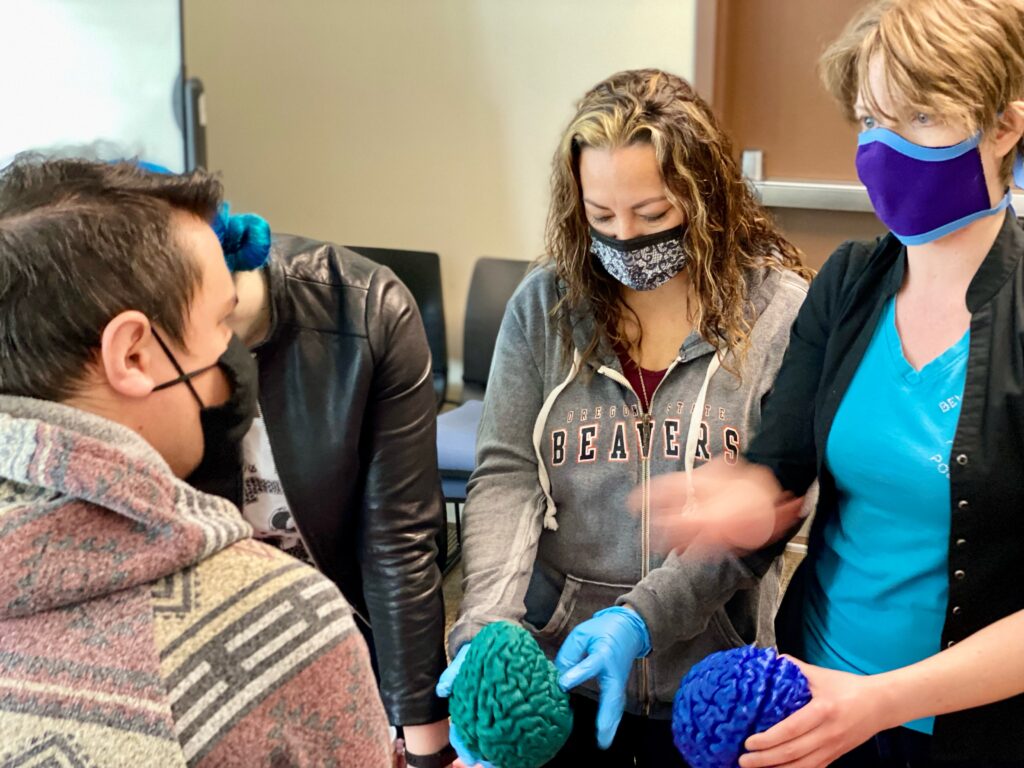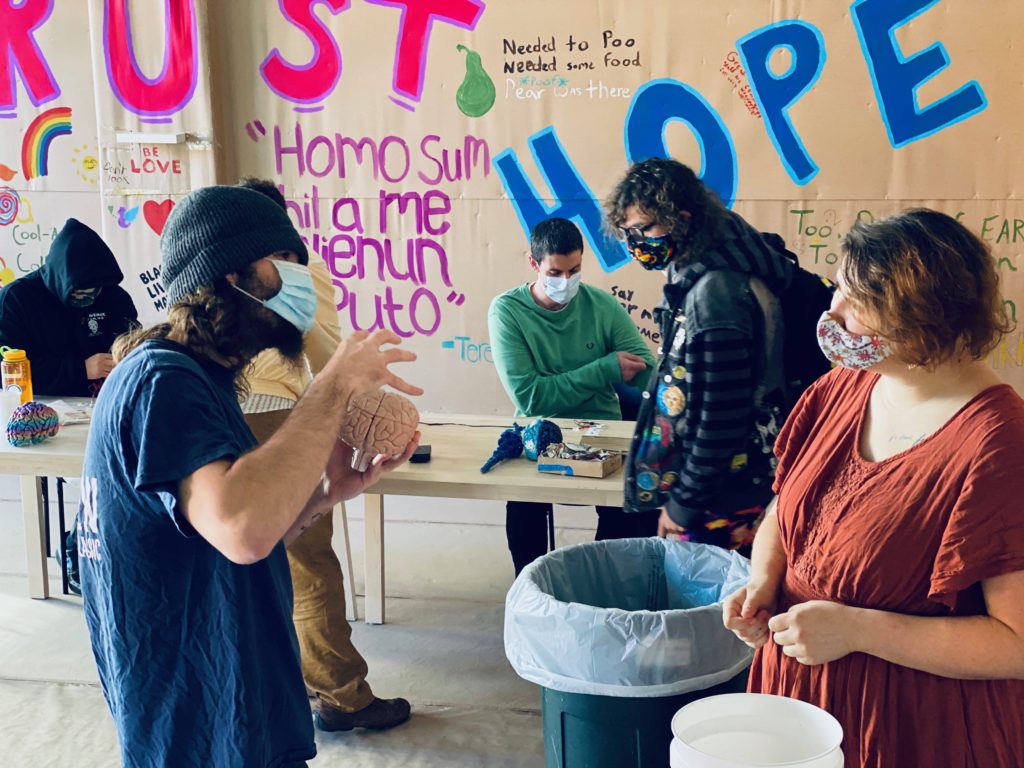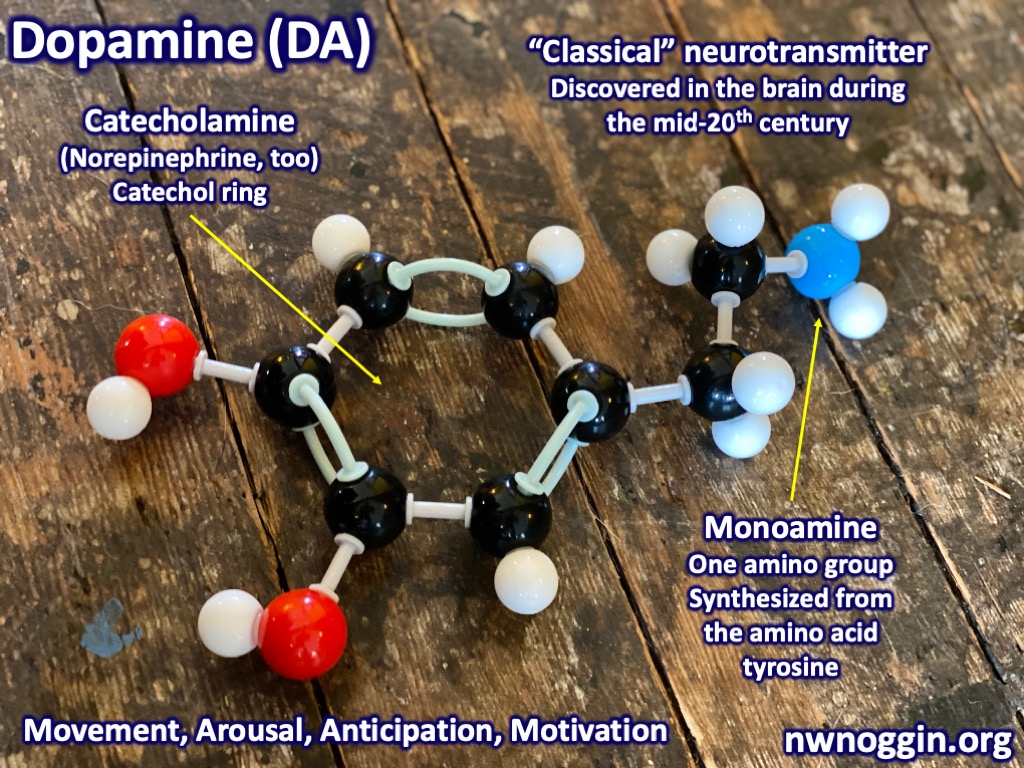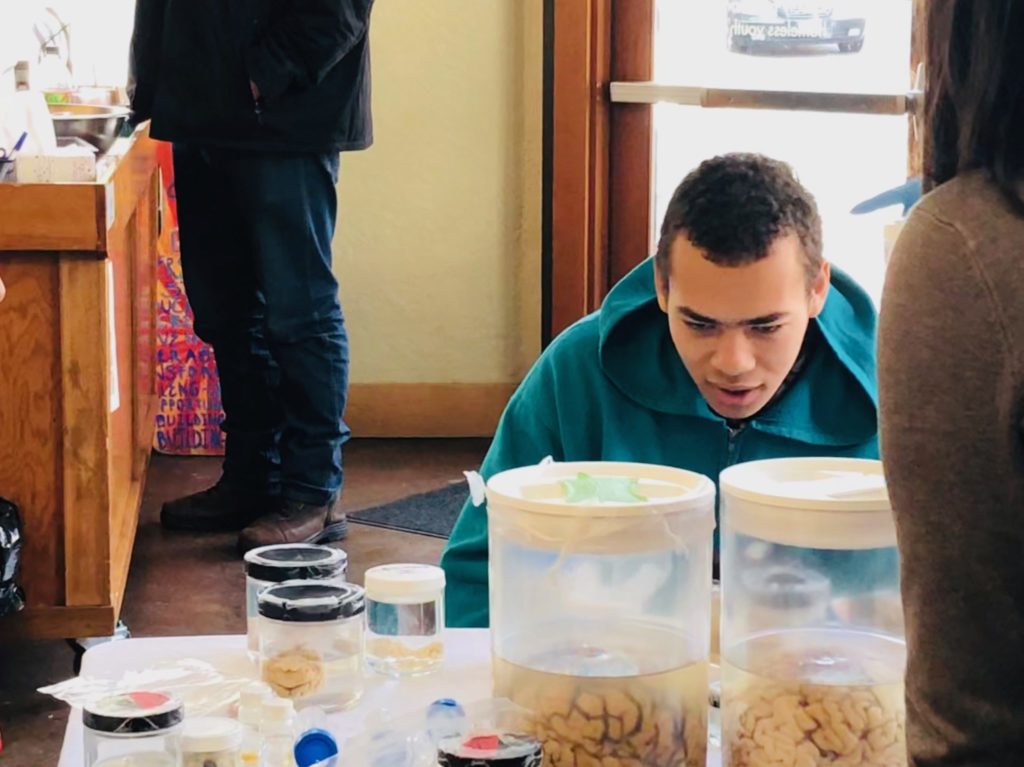Post by Brooke Searle, undergraduate in Psychology pursuing an Interdisciplinary Neuroscience minor at Portland State University.

What many of us find fascinating about neuroscience is this idea of neuroplasticity – that our brains can be changed over time. What that means to me is: whatever struggles a person is going through, whatever habits or hardships are present, there is hope.

LEARN MORE: What Is Neural Plasticity?
p:ear is an organization that is all about hope and change. They are an organization that shows homeless youth that their existence is essential, that they can make a difference, and that they matter.

LEARN MORE: p:ear
LEARN MORE: Noggin @ p:ear
LEARN MORE: Portland & p:ear are beautiful
Many homeless youths have been told the opposite, by police, politicians and people passing by. p:ear is helping homeless youth change their beliefs from self-doubt to hope, ultimately changing their brains.

LEARN MORE: How should police respond to homelessness? Results from Portland, Oregon
LEARN MORE: City Council Approves Unfunded Plan to Criminalize Unsheltered Homelessness
LEARN MORE: Listening to testimony @ p:ear
The adult brain has about 86 billion neurons. Young adults, such as the houseless youth that come to p:ear, may have more neurons than that. According to this article babies are born with close to 100-200 billion neurons. Our brains prune down these neurons so that the neurons can form strong connections, often called neural networks. (Check out this cool NIH article on the neuron pruning process)

LEARN MORE: Are There Really as Many Neurons in the Human Brain as Stars in the Milky Way?
LEARN MORE: The remarkable, yet not extraordinary, human brain as a scaled-up primate brain
LEARN MORE: How Many Neurons Are in the Brain?

Each neuron can receive up to 10,000 connections with other neurons, little gaps between the cells called synapses, while some neurons, called Purkinje cells, may have up to 200,000 connections! There can be over 100 trillion of these connections in each of our brains. These connections form the complex networks of synaptically linked neurons through which electricity and chemicals flow, creating us. (I found this to be a really interesting article about neural connections and the synapses)

Most of our neurons send signals to other neurons by releasing chemicals called neurotransmitters. You may have heard of some neurotransmitters, like dopamine and serotonin.

Dopamine is a critical neurotransmitter involved in generating neuroplasticity, causing changes in neural networks (or changing which neurons speak to which other neurons, or how loudly or softly they speak, or get heard). Dopamine is usually released when a person encounters environmental stimuli that motivates them, or when they are experiencing something novel and new.

LEARN MORE: Dopaminergic Modulation of Synaptic Plasticity
LEARN MORE: Dopamine: Functions, Signaling, and Association with Neurological Diseases
LEARN MORE: Neurotransmitters: How Brain Cells Use Chemicals to Communicate
I think about p:ear’s coffee school, for example:

It represents an opportunity for homeless youth to be able to learn skills needed for a job while showing them that they are valuable (and who isn’t thankful, appreciative and capable of seeing other people when receiving their morning caffeine?).

The extensive art activities also offer chances for young people to express themselves, and the gallery invites others inside to discover their talent and skill and experience some novelty and motivation themselves.



LEARN MORE: Seeing us all through research & art
LEARN MORE: Being there means something
I see how these experiences could be both motivating and new. It’s also motivating and enjoyable and neural network-updating for me, too, to join in these activities. p:ear gives youth the resources needed to live a more fulfilling and happy life – and is probably helping to change all our brains for good.


